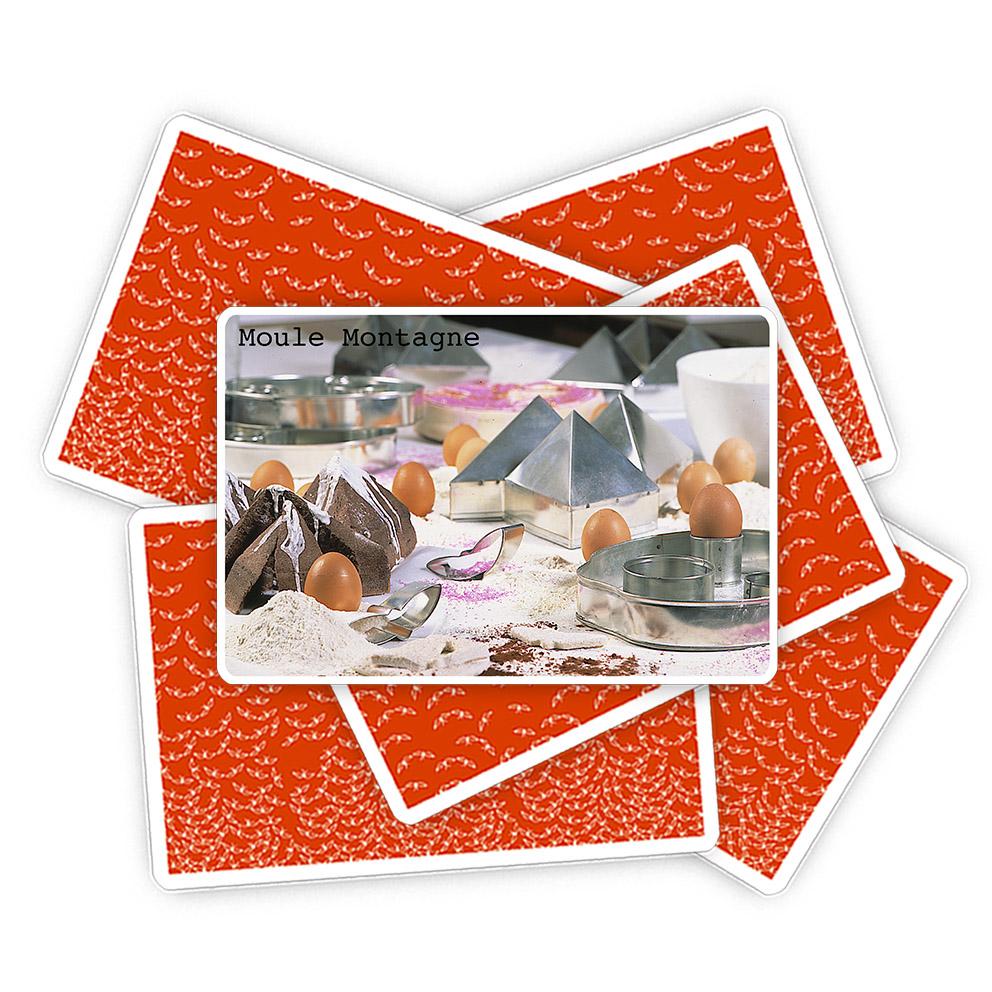Cake Molds
•Posted on July 11 2020

Gourmands and pastry chefs, unlimited lovers of various chocolate cakes, we have always been obsessed with the mold in the shape of a mountain for two reasons. We realized that strict equality in the pastries did not make sense and that some wanted a small slice, while others wanted a big piece. The second reason is aesthetic, the cake in the shape of a mountain, with its peaks covered in icing sugar, retains its Alpine look despite the clean cuts. To honor other geographies, we also designed the Crater mould, and of course the cookie cutter, in the shape of flies.
These first molds were in tin, made in Portugal and we produced them from 1996 to 2000. The Cratère mold cost 75 francs and did not survive the changeover to the Euro, the Montagne mold was worth 100 francs then 39 € and the fly cookie cutter 20 francs and finally 7 €. 

To initiate apprentice pastry cooks, the molds were accompanied by this instruction manual:
In the heart of winter, the three peaks of a chocolate cake baked in the MOULE MONTAGNE, freshly whitened by a final shower of icing sugar, are attacked with a small spoon; the descent takes place little by little, revealing the strata of flavors contained in the flanks.
When the season changes, and the weather warms up, there is nothing better to cool off than a nonchalant walk around three peaks in sorbets of different colors and flavors - to mold them like this, you wait a few minutes that the ice softens, without melting, and then we pack it in the mold - we can play on the effect of geological layers, climatic orientations, or graphic research...
We'll fill the lakes with a steaming brioche, just out of a CRATER MOLD, with melted chocolate (muddy eruption), raspberry jelly (molten lava), or Crème Chantilly (snow); the tormented beauty of this volcanic landscape will enchant the taste buds and delight the hearts.
Happy swarms of flies will fly here and there on the table, waiting to be bitten... 
A few years later, we persisted and released 2 sublime Mont Blanc ceramic molds, made in collaboration with our friends Astier de Villatte, for a very collector's edition. On this occasion, Sébastien Gaudard, a wonderful Parisian pastry chef, dedicated his recipe for Lorrain cake to us. “ For a Mont Blanc mould, take 4 egg whites at room temperature, 130g. crystal sugar (including 20g. for the mould), 70g. Of sifted flour and 80g. extra fresh butter. “The recipe appeared in “Le Meilleur des Desserts” by Françoise Bernard & Sébastien Gaudard published by Hachette Pratique.
Gourmet and pastry chefs, lovers of various chocolate cakes without limits, we have always had an obsession with the mountain-shaped mold for two reasons. We realized that strict equality - as far as pastries were concerned - made no sense and that some people wanted a small piece, while others wanted a big piece. The second reason is aesthetic, the cake in the shape of a mountain, with its peaks covered with icing sugar, retains its Alpine look despite the sharp cuts. To honor other geographies, we had also designed the Crater mould, and of course the cookie cutter for the biscuits, in the shape of flies.
These first molds were made of tinplate, manufactured in Portugal and we produced them from 1996 to 2000. The Crater mold cost 75 francs and did not survive the changeover to the Euro, the Mountain mold was worth 100 francs then 39 € and the fly punch 20 francs and finally 7 €.
To initiate the apprentice bakers, the molds were accompanied by these instructions:
In the heart of winter, the three tops of a chocolate cake baked in the MOULE MONTAGNE Mould, freshly blanched by a last shower of icing sugar, attack with a spoon; the descent is made little by little, revealing the layers of flavors contained in the flanks.
When the season changes, and the weather warms up, there is nothing like a nonchalant walk around three peaks in sorbets of different colors and perfumes to cool down - to mold them in this way, you wait a few minutes for the ice to soften, without melting, and then you cup it into the mold - you can play on an effect of geological layers, climatic orientations, or graphic research...
The lakes will be filled with a steaming brioche, just out of a MOULE CRATERE, with melted chocolate (muddy eruption), raspberry jelly (molten lava), or Crème Chantilly (snow); the tormented beauty of this volcanic landscape will delight the taste buds and delight the hearts.
Merry swarms of flies will fly here and there on the table, waiting to be bitten...
A few years later, we persisted and released 2 sublime Mont Blanc ceramic moulds, made in collaboration with our friends Astier de Villatte, for a small but very collector's edition. On this occasion, Sébastien Gaudard, a wonderful Parisian pastry chef, dedicated his recipe for Lorrain cake to us. “For a Mont Blanc mold, take 4 egg whites at room temperature, 130g. crystal sugar (including 20g. for the mold), 70g. Sifted flour and 80g. extra fresh butter. "The recipe appeared in "The Best of Desserts" by Françoise Bernard & Sébastien Gaudard published by Hachette Pratique.
